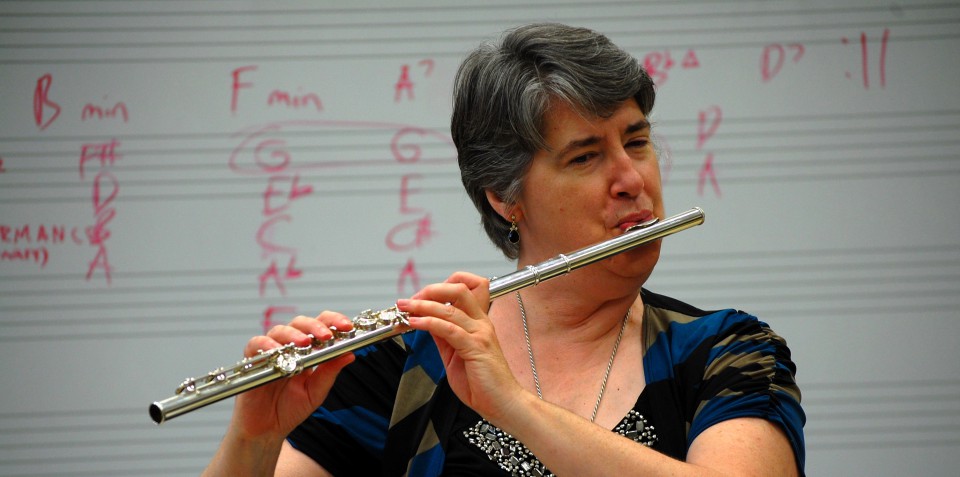There is more to technique than just moving your fingers. In fact, good technique on flute integrates a number skills and types of awareness. This includes:
- Balance of the flute and hand positions – if the flute isn’t properly balanced, then students develop all kinds of compensating behaviors to keep the flute from rolling back.
- Blowing – without steady air speed and pressure, the greatest finger technique is not of much use because we won’t hear what is being played.
- Coordinating fingers and tongue – have you ever heard a student try to play a fast passage while their fingers and tongue are out of phase? Even with decent finger technique, it isn’t very effective to be tonguing behind the ictus of the note.
- Knowledge of scales and arpeggios in all 12 keys – make it a priority that your students get beyond the keys of F, Bb and Eb. Help them learn to think in sharps for sharp keys and flats for flat keys.
Get your flute students technical exercises just for them, or at least for woodwinds rather than brass. The venerable band technique books are either more focused on brass skills like lip slurs and/or are limited in scope in their technical exercises for flute. There are many excellent technique books specifically for flute that target the developing flute player, including books by Trevor Wye (The Practice Books) and Patricia George and Phyllis Avidan Louke (The Flute Scale Book). There are also great scale and arpeggio exercises in all keys and different patterns and note values (quarter, eighth, sixteenth notes) in the PC/Mac version of Smart Music. In Smart Music, you can assign scale exercises for assessment, set it to loop through the circle of fifths and change articulation patterns.
Tone work is a vital part of technical practice. Please note that brass style lip slurs and Remington exercises may be useful in an ensemble setting, they are not particularly helpful in developing characteristic flute tone. For developing flute tone there is no better exercise than practicing octaves slowly. Students can focus on directing the air properly and pay attention filling the space between the notes with steady air. I recommend waiting until high school to introduce the Moyse long tones. The younger kids usually don’t have the maturity to understand how to explore tone, focus and continuity with the Moyse long tones.
The important thing is to help your students develop good home practice habits that include regular tone and technical work. If kids are practicing 30-40 minutes a day, 10-15 minutes focusing on technique will make a huge difference in their skill set.
If you find these entries useful, please subscribe, share with your colleagues and come back regularly. Feel free to comment. If you have a topic you would like to see explored more fully, you can contact me via IM/Messenger on Facebook or email me at dr_cate@sbcglobal.net. For information about clinics, workshops and performances, click here.



Pingback: Flute Go Juice | Dr. Cate's Flute Tips